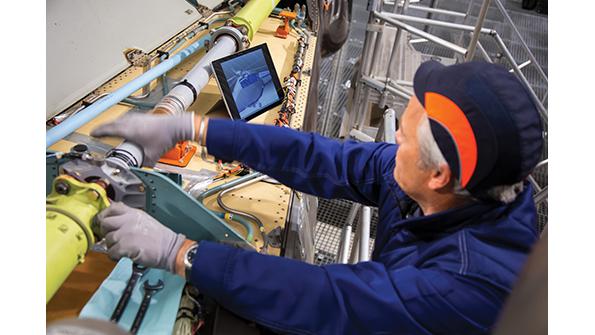Opinion: How the Aerospace Industry Can Weather 2022’s Turbulence

Aerospace companies are planning for another turbulent year. New COVID-19 variants are driving continued uncertainty among aerospace executives about the state of travel. But rather than just wait for the industry to bounce back, aircraft manufacturing and aftermarket leaders can focus on a number of areas to set their businesses up for a stronger position in 2022.
Supply Chain Resilience
The next six months are likely to be difficult. More than half of executives we spoke to say they have reduced confidence in their supply chain timeliness and quality within this timeframe. This uneasiness is at an all-time high since we first started reporting executive sentiment on their supply chains in our annual commercial aerospace report over six years ago. On the other hand, executives are optimistic for a return to pre-pandemic supplier execution over the next 12-18 months; nearly all of them are hopeful that suppliers will meet or exceed delivery expectations.
This begs the question of what can be done in the new year to address supply chain issues. One way to have a more resilient supply chain is to introduce automation across the value chain so it is ready for future “black swan” events. For example, one aerospace product and services company shifted to hybrid cloud data storage that cut annual storage costs and gained rapid and cost-effective storage scalability to help manage peaks in demand while providing the foundation for supply chain automation.
OEMs should be focused on shifting from supply-led to demand-driven manufacturing and supply chains. The current inconsistency in demand and production rates are causing big challenges for OEMs and Tier 1 suppliers, so they need to look at rebalancing production lines as demand changes. Additionally, OEMs are working closely with their suppliers to manage risk and adjust delivery schedules to accommodate current supply chain issues.
A Digital Mindset
Aerospace executives who successfully embrace digitalization at the core of their businesses can improve returns from their digital investments up to four times more than that of their competitors. We also found that more than 80% of aerospace executives fear substantial cost escalations if they fail to overcome organizational challenges for their digital reinvention. This highlights the need for executives to continue finding ways to prioritize a digital future that augments their workers with technology, improves customer experience and supports business growth.
A successful digital transformation will rest on defining clear objectives at the outset. This needs to be broad enough to encompass the company’s own organization and the wider ecosystem, as well as articulate what the vision means for all its stakeholders. The digital value proposition must also be defined up front, with a clear idea of the performance drivers and strategic objectives that will inspire innovation and create value. With that vision set, companies must develop a digital road map with clearly defined milestones.
At the same time, it is important that companies take a pragmatic approach to legacy technologies, with an IT strategy that builds digital capabilities progressively—at different times and speeds. It is also important to foster a digital culture to embed and sustain new ways of working across the organization.
Sustainability Is Fueling Aerospace
The aerospace industry is moving toward a sustainability agenda that goes well beyond reducing aircraft emissions and extends to reducing environmental impact across the entire value chain. What stands out, though, is that only 24% of aerospace executives we recently surveyed rank sustainability as very important today, yet this number spikes to 70% of executives seeing it as a critical focus five years from now.
The greatest opportunities to decarbonize aviation lie in advances in energy and propulsion such as electrification, hydrogen, sustainable aviation fuels and new engine technologies. A few of these technologies, like geared turbofans, are in production and scaling into fleets. Yet most remain in development, with significant steps in technical maturity and supporting infrastructure required for them to be certificated, enter commercial airline fleets and be produced at scale. These next-generation technologies have a long lead time, though, and likely will not make a significant impact until 2030 or beyond.
In the coming year, aerospace executives can continue tackling sustainability by focusing on technology that drives small reductions in emissions—those tied to weight, aerodynamics, flight efficiency and life-limited parts. They also can further embed sustainability into their overall strategy and into every stage of the manufacturing and delivery of products and services—from internal operations to their supply chain partners.
Collaborate To Innovate
One of the most impactful strategies for these challenges is to go into 2022 with an open mind to coordinate strategic ecosystem partnerships. Not only will an ecosystem support model equip aerospace and defense companies to address today’s disruptions and be better prepared to weather new ones, but it will also enable ways to create new interactions or discover new ways to approach the market.
John Schmidt is the global aerospace and defense industry lead for Accenture.
The views expressed are not necessarily those of Aviation Week.




